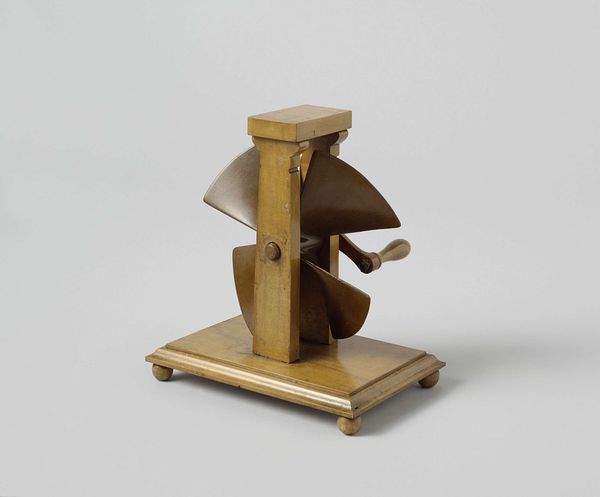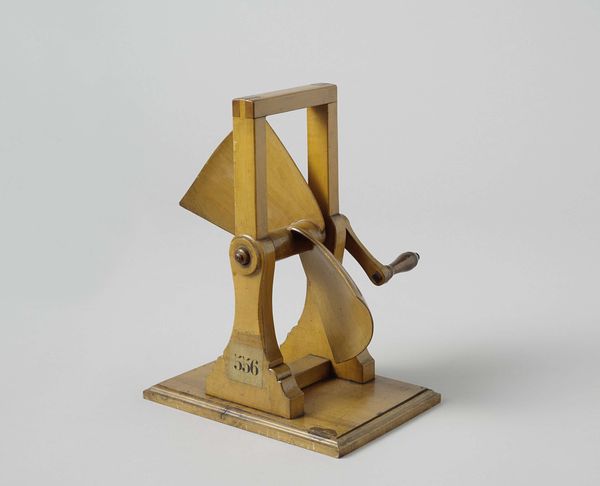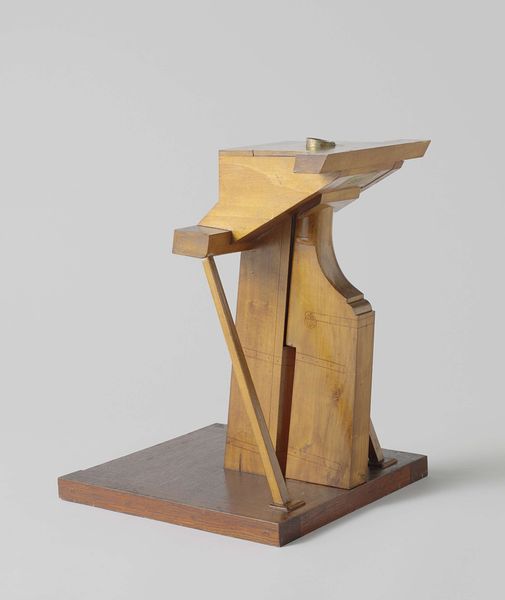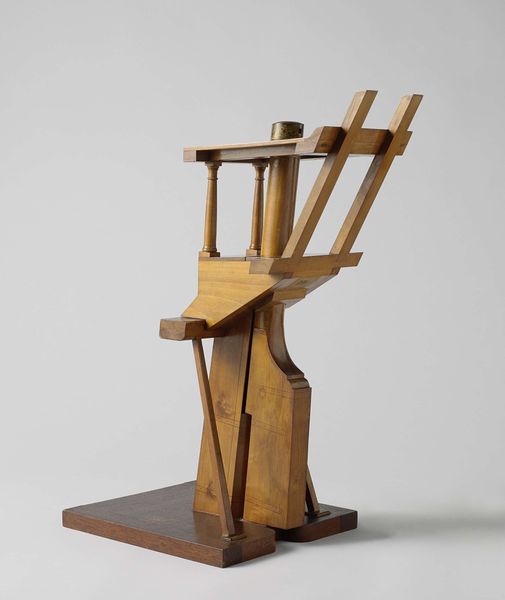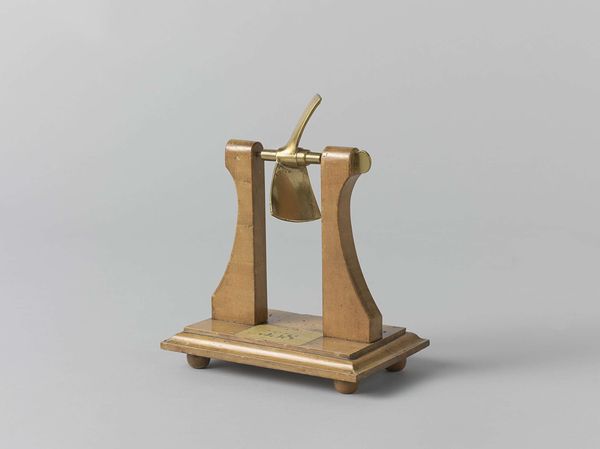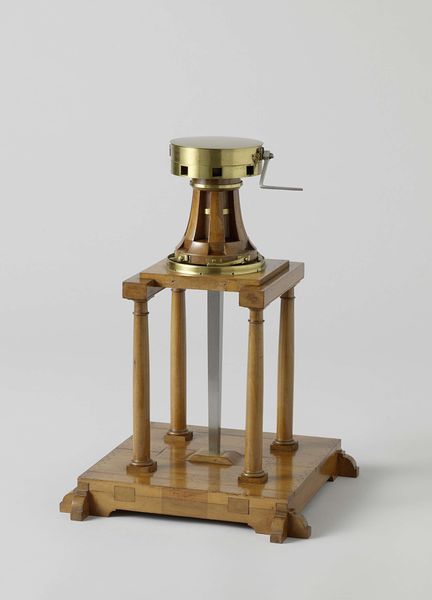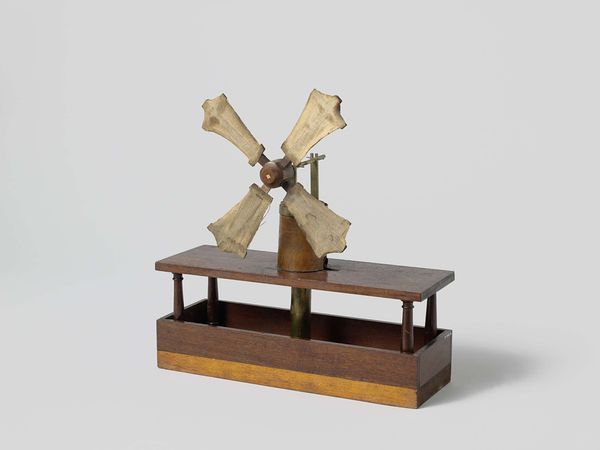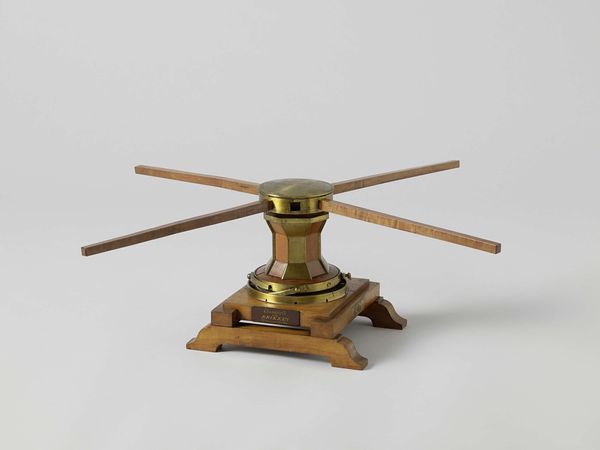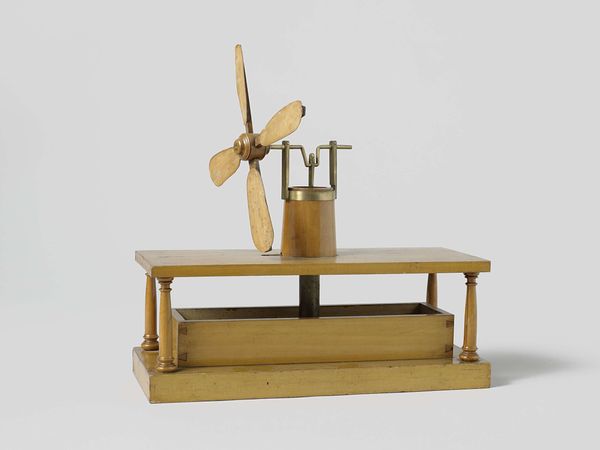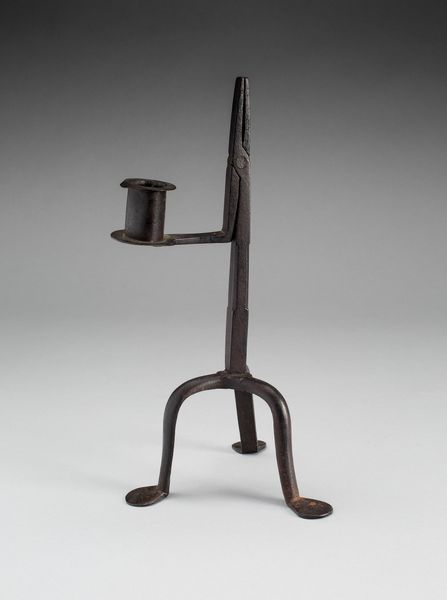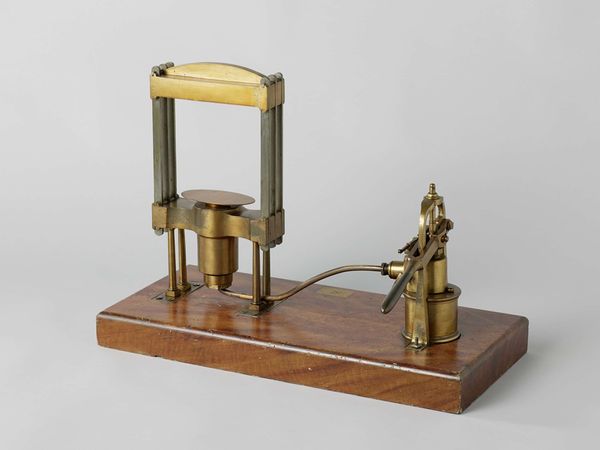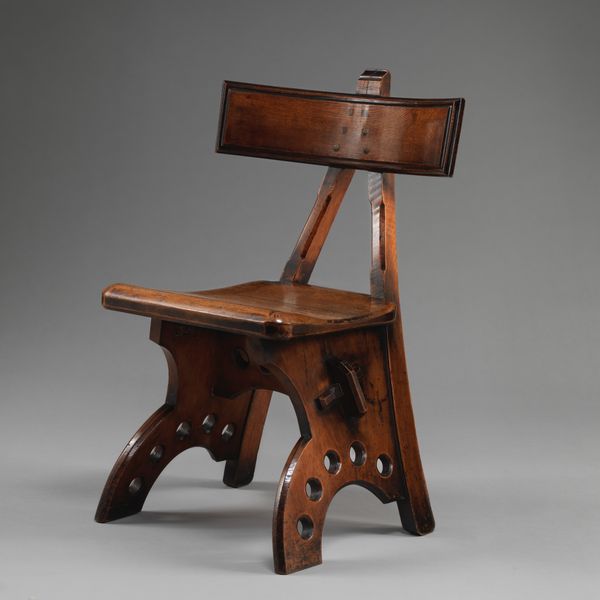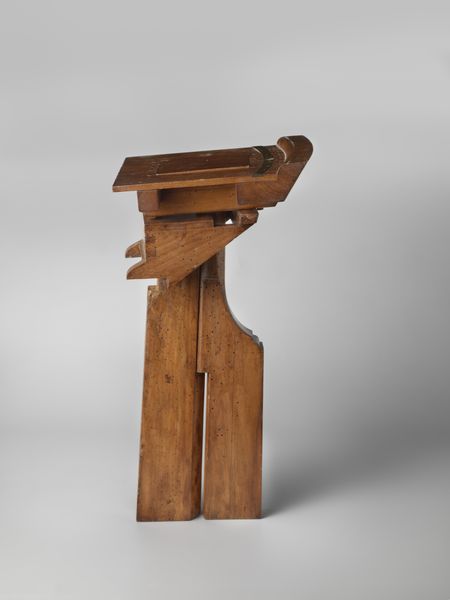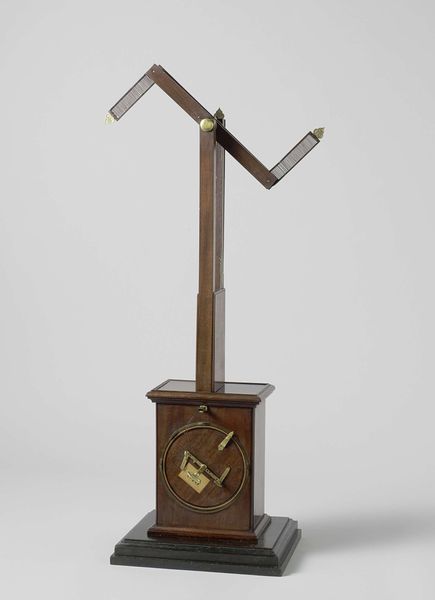
metal, sculpture, wood
#
3d model
#
3d printed part
#
rounded shape
#
metal
#
plastic material rendering
#
virtual 3d design
#
product design photgrpaphy
#
3d shape
#
prop product design
#
sculpture
#
metallic object render
#
3d modeling
#
wood
#
realism
Dimensions: height 17 cm, width 21 cm, depth 20 cm
Copyright: Rijks Museum: Open Domain
Editor: This is "Model of a Two-Blade Propeller" made around 1847. It’s crafted from wood and metal, and what strikes me is how this object, so clearly about progress and forward motion, feels so firmly rooted in its time. What historical conversations do you see happening here? Curator: That’s a keen observation. This propeller model exists at a fascinating intersection. The mid-19th century was a period of immense social and technological change. How did these advancements impact different demographics – women, people of color, the working class? This object, in its demonstration of potential, carries both utopian promise and the seeds of potential exploitation. Who benefitted from this "progress," and at what cost? Editor: So, looking at it now, we can't divorce its innovative spirit from the inequalities of the time? Curator: Exactly. Consider how inventions like this fueled industrial expansion and colonialism. This propeller embodies not just mechanical ingenuity, but also the potential for disrupting existing power structures and intensifying social stratification. Who had access to this technology? Who built it? Who profited? Asking these questions helps us understand its complex position within history. Editor: That adds so much depth! It's not just a propeller; it’s a symbol of a whole social dynamic. I hadn’t thought of it that way. Curator: Precisely. Examining objects like this through an intersectional lens, questioning who holds the power and whose stories are centered, enables us to have a more honest conversation about art and its relation to the world. It invites a critique of not just art, but also societal progress. What new questions does it bring up for you? Editor: I think it makes me question the narratives of progress that we often take for granted. Thanks for offering that different perspective. Curator: My pleasure. And for me, your initial feeling, "rooted in time", really helped me connect that history to the present, so thank you.
Comments
No comments
Be the first to comment and join the conversation on the ultimate creative platform.
